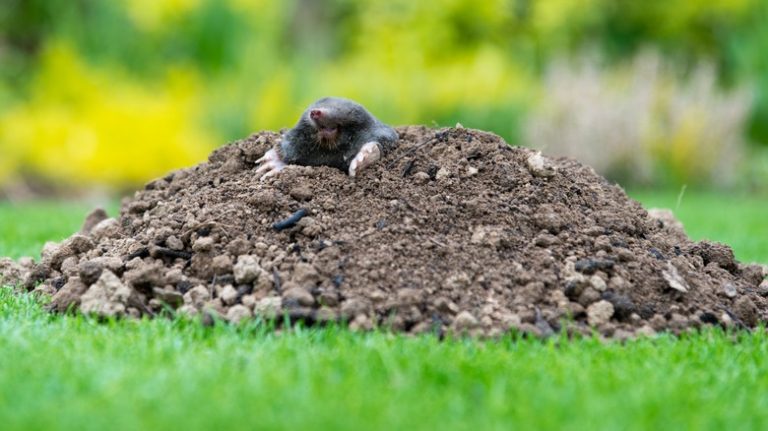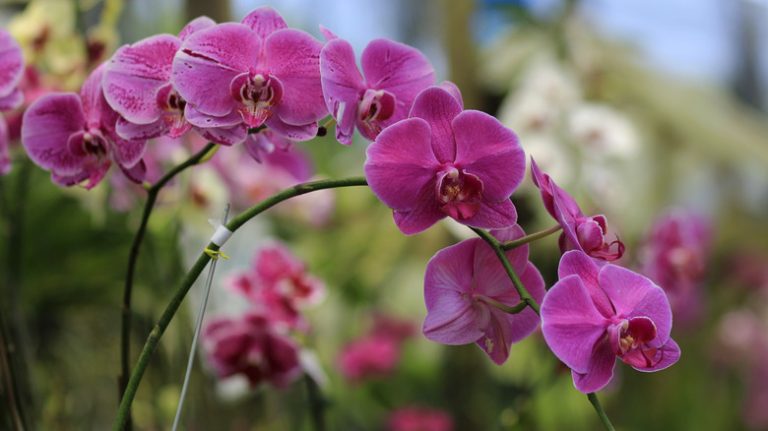Asclepias Tuberosa, commonly known as milkweed flower, is a stunning and unique plant that can be found in various habitats across the United States. This perennial beauty is not only visually striking but also plays a crucial role in the survival of many species, including the monarch butterfly.
One of the most distinct characteristics of the milkweed flower is its bright orange coat, which serves as a warning sign to potential predators. This coat contains toxic substances called toxins, which can cause harm or even death to animals that dare to consume it. However, this toxicity makes the plant an excellent choice for those seeking natural pest control in their gardens.
When it comes to planting milkweed flowers, spacing is crucial. It is recommended to provide at least 18 inches of space between each plant to allow for their optimal growth and development. Asclepias Tuberosa prefers well-draining soil, and propagating them can be accomplished through seed placement in soil that has been thoroughly prepared and mulched.
While milkweed flowers can be grown from seed, it’s important to note that germination may take several weeks or even months. To ensure the highest chance of success, it is best to start the seeds indoors at least two months prior to the desired planting time. Once the threat of frost has passed and temperatures are consistently above freezing, the young plants can be transplanted to their permanent outdoor location.
Milkweed flowers are not only a feast for the eyes, but they also provide valuable food sources for various species, including hummingbirds and butterflies. Their tall and showy floral structures attract these pollinators from far and wide. Additionally, milkweed flowers can reach a height of up to three feet, making them an excellent choice for creating a striking visual impact in your garden or landscaping.
It is important to note that not all milkweed varieties are created equal. Asclepias tuberosa, also known as pleurisy root, is a better option for home gardeners as it is less aggressive than some other species. However, precaution must still be taken to prevent the spread of seeds in areas where milkweed is not desired. It is advisable to do thorough research and consult local gardening resources or experts to determine the best milkweed flower variety for your specific needs and growing conditions.
In conclusion, milkweed flowers are not only beautiful additions to any garden or landscape, but they also play a vital role in supporting the ecosystem. By planting and nurturing these plants, you are not only providing a food source for various pollinators but also aiding in the survival of species like monarch butterflies. So, roll up your sleeves, get your hands dirty, and start cultivating these stunning and beneficial plants!
About
Milkweed flower, also known as Asclepias syriaca, is a well-known perennial plant that belongs to the milkweed family. It is native to North America and can be found in a wide area, including open fields, meadows, and along roadsides.
The milkweed flower is known for its tall stalks, which can reach heights of 3-6 feet and are topped with clusters of small orange flowers. These flowers have a unique shape and are known to attract a variety of pollinators, including bees, butterflies, hummingbirds, and wasps.
One interesting characteristic of the milkweed flower is its milky sap, which is poisonous to some animals but serves as a defense mechanism. The plant is the exclusive host for the larvae of the monarch butterfly, which feed on the leaves and use the toxins in the milkweed sap to protect themselves from predators.
Growing milkweed flower in your garden can be a rewarding experience. It is a low-maintenance plant that thrives in well-drained soil and full sun. It is best to sow the seeds in the early spring, as they require a period of cold stratification before germinating. The seeds should be planted about 1/4 inch deep and spaced about 1-2 feet apart. Once planted, the seeds should be watered thoroughly and consistently to ensure proper germination and growth.
Milkweed flower can also be propagated by division or by taking root cuttings. When dividing the plant, make sure each section has a healthy root system. Root cuttings can be taken in the early spring by removing a section of the plant’s root and planting it in a suitable pot or planting area.
If you are interested in attracting butterflies to your garden, milkweed flower is a must-have. Its bright orange flowers and nectar-rich blooms are irresistible to butterflies, especially the monarch butterfly. By planting milkweed flower, you can provide a vital food source for these beautiful creatures and contribute to their survival.
In addition to its importance to butterflies, milkweed flower also has a variety of medicinal and ecological uses. Native Americans, particularly the Iroquois tribe, used milkweed to make a poultice for treating lung and respiratory issues. The sap was also used to remove warts and calluses. The fibrous consistency of the stalks made it suitable for making rope and cordage. Today, milkweed is widely researched for its potential to purify contaminated soil and its potential for use in renewable energy.
If you are considering adding milkweed flower to your garden, it’s important to note that it can sometimes be invasive and take over a garden if not properly contained. To prevent this, it is recommended to plant milkweed flower in a well-defined area or use containers. Keep in mind that the plant can spread through its expansive root system and by wind-dispersed seeds.
In conclusion, milkweed flower is a beautiful and beneficial addition to any garden. Its vibrant flowers, ability to attract pollinators, and its importance to the survival of butterflies make it a popular choice among gardening enthusiasts. Whether you are interested in its ecological benefits or its potential medicinal uses, milkweed flower offers a multitude of reasons to include it in your garden.
Plant Milkweed
Milkweed is a type of plant that has gained popularity in recent years. Known for its colorful flowers and ability to attract butterflies and other pollinators, milkweed offers many benefits to gardens and local ecosystems. However, it’s important to be aware of the plant’s toxicity and characteristics when considering whether to plant milkweed in your garden.
First, let’s talk about the toxicity of milkweed. While it’s true that milkweed is poisonous to humans and animals if ingested, it’s worth noting that the milky sap of the plant is what contains the toxic compounds. As long as you handle the plant with care and avoid ingesting any parts of it, you shouldn’t have any issues. In fact, many gardeners and plant enthusiasts have been growing milkweed for years without any problems.
Milkweed is a rather hardy plant that thrives in well-drained soils and sunny locations. It’s best to plant milkweed in the early spring, after the last frost. You can start the seeds in a greenhouse or directly sow them in the garden. The plant can also be propagated by transplanting young plants. Just make sure to give the plant enough room to spread, as milkweed has a tendency to be quite vigorous in its growth.
There are many different types of milkweed plants available, each with its own unique characteristics. Some have orange or white flowers, while others have a more milky sap. If you’re unsure about which type to plant, ask your local nursery or gardening resources for more information. They can guide you in selecting the best milkweed variety for your garden.
Milkweed is a native plant in North America and has a long history of use by Native American tribes. It’s believed that milkweed played a role in their survival, as the fibers of the plant were used for making material and the sap for medicinal purposes. Today, milkweed continues to support wildlife, including monarch butterflies and hummingbirds.
When it comes to caring for milkweed plants, they are relatively low-maintenance. They prefer average, well-drained soils and should be watered regularly, especially during dry periods. However, be careful not to over-water them, as this can lead to root rot. Additionally, milkweed plants should be pruned less frequently to allow them to grow and spread. This will also help to promote more flower production.
In conclusion, planting milkweed in your garden can be a great idea. Not only does it add beauty with its unique flowers, but it also provides important resources for butterflies and other pollinators. Just remember to handle the plant with care, be aware of its toxic properties, and follow the basic guidelines for growing and caring for milkweed. By doing so, you can create a welcoming habitat for various species while enjoying the colorful sight of milkweed blooms in your garden.
Here are some resources to help you find the best milkweed for your area
When searching for the best milkweed for your area, it’s important to consider the type of soils and moisture consistency in your garden. Milkweeds prefer well-drained soils and can tolerate a range of moisture levels, from dry to moist.
It’s also essential to know the toxicity levels of the milkweed species you are considering. Some milkweeds, like Asclepias syriaca, have a high toxicity level and can be poisonous to animals if ingested. Others, like Asclepias tuberosa, have no known toxicity concerns.
One way to find the best milkweed for your area is to gather local information. Check with local gardening clubs or nurseries to get recommendations on milkweed varieties that are well-suited to your region. These local resources can provide valuable insights into which milkweed species have thrived in your area.
Another resource is online research. There are many websites and forums dedicated to milkweed gardening. You can find information about specific milkweed varieties, their preferred growing conditions, and even photos of the plants in different stages of growth.
When it comes to propagating milkweed, there are a few key considerations. Milkweed seeds should be sown in early spring, just before the last frost. They need a period of cold stratification to break their dormancy. Once germinated, milkweed plants should be thin out to prevent overcrowding and promote healthy growth.
Physical pruning may be necessary to maintain the right height and shape for milkweed plants. Some milkweed species, like Asclepias incarnata, can grow quite tall and may require pruning to keep them in check.
It’s worth noting that milkweed plants are a favorite food source for monarch butterfly larvae, also known as caterpillars. By providing milkweed in your garden, you are creating a crucial habitat for monarch butterflies to lay their eggs and support their life cycle.
In North America, there are over 100 types of native milkweed species, each with its unique characteristics. Some are more aggressive growers than others, so it’s essential to research and select the right milkweed for your garden.
For those looking for milkweed gardening ideas, a great resource is the Monarch Joint Venture’s Milkweed Gardening Guide. This comprehensive guide provides information on milkweed varieties, seed sources, and planting tips to help you create a successful milkweed garden.
Remember that milkweed plants are more than just a beautiful addition to your garden – they play a vital role in supporting the life cycle of the monarch butterfly. By choosing the right milkweed species for your area and providing a suitable habitat, you can contribute to the conservation of these remarkable insects.



